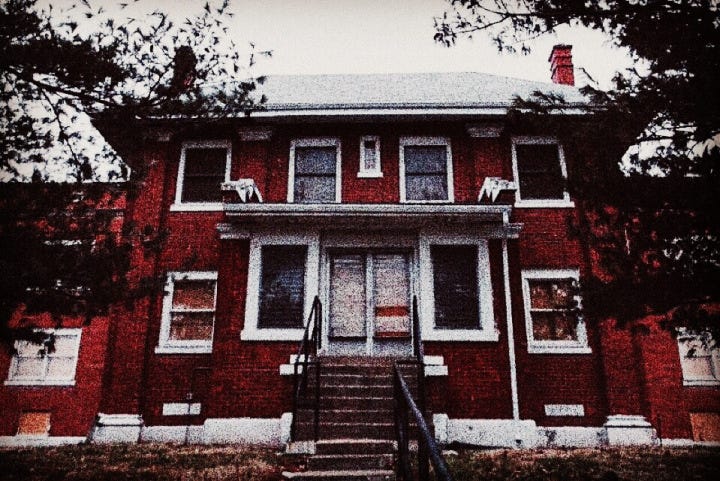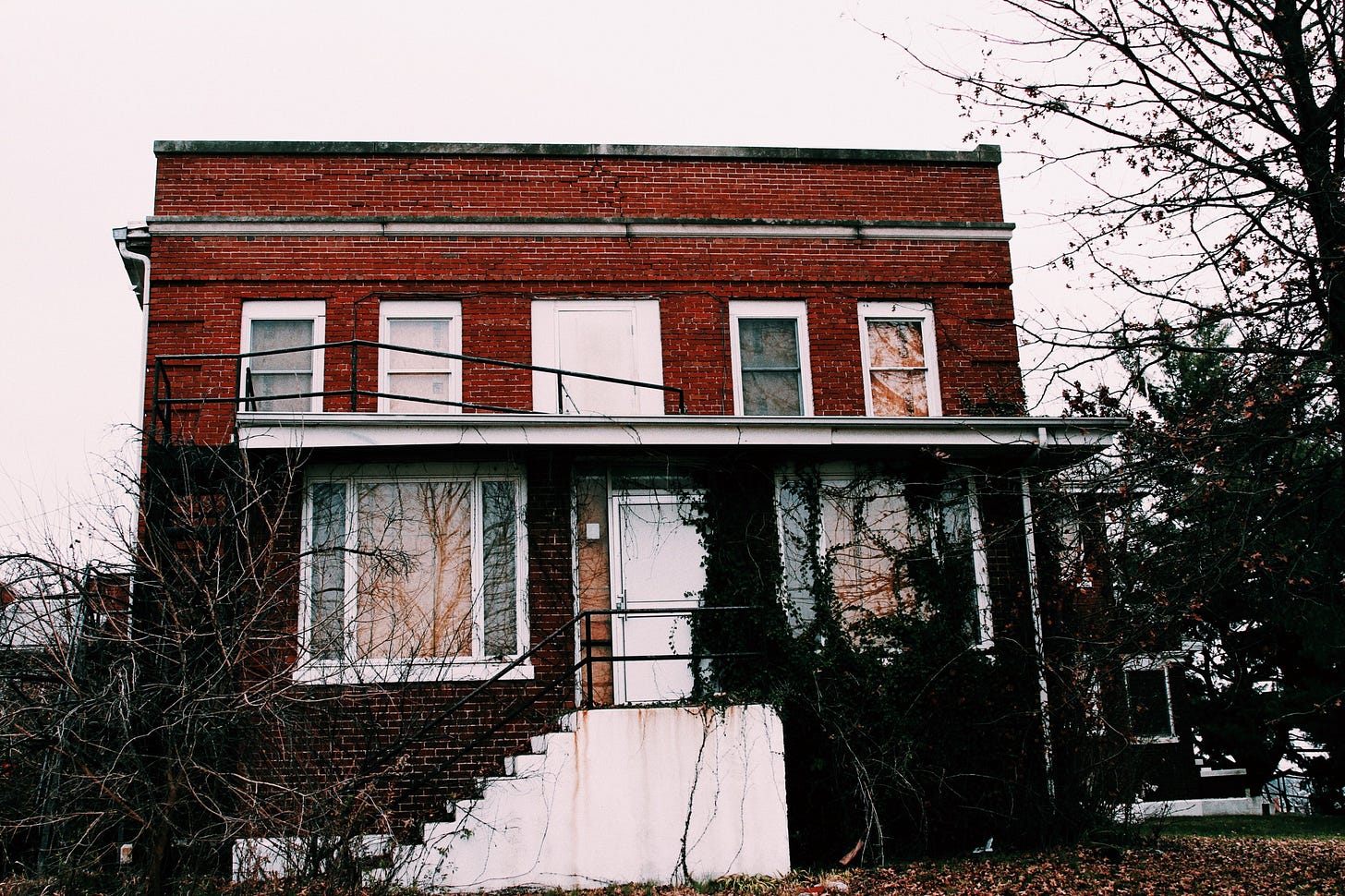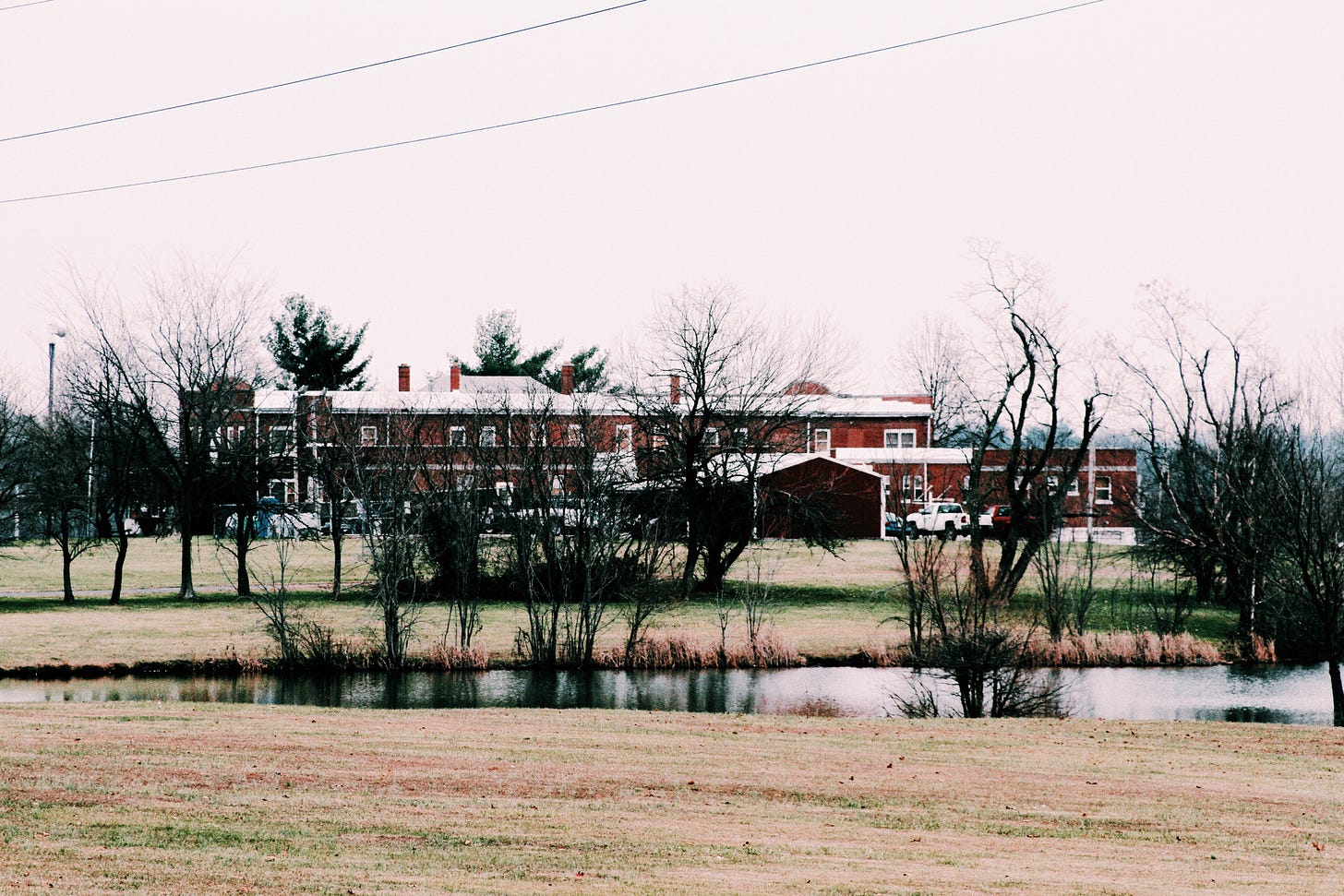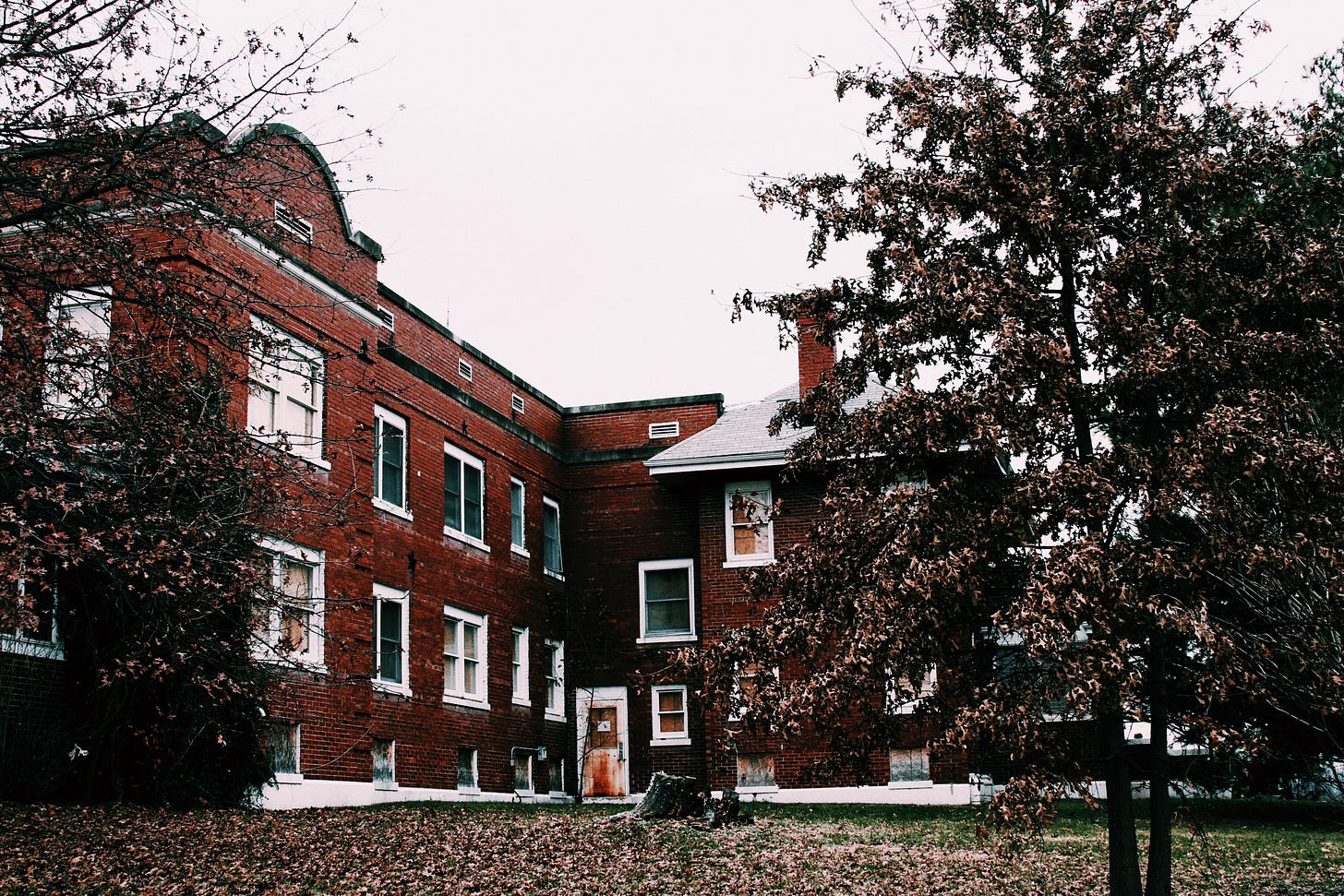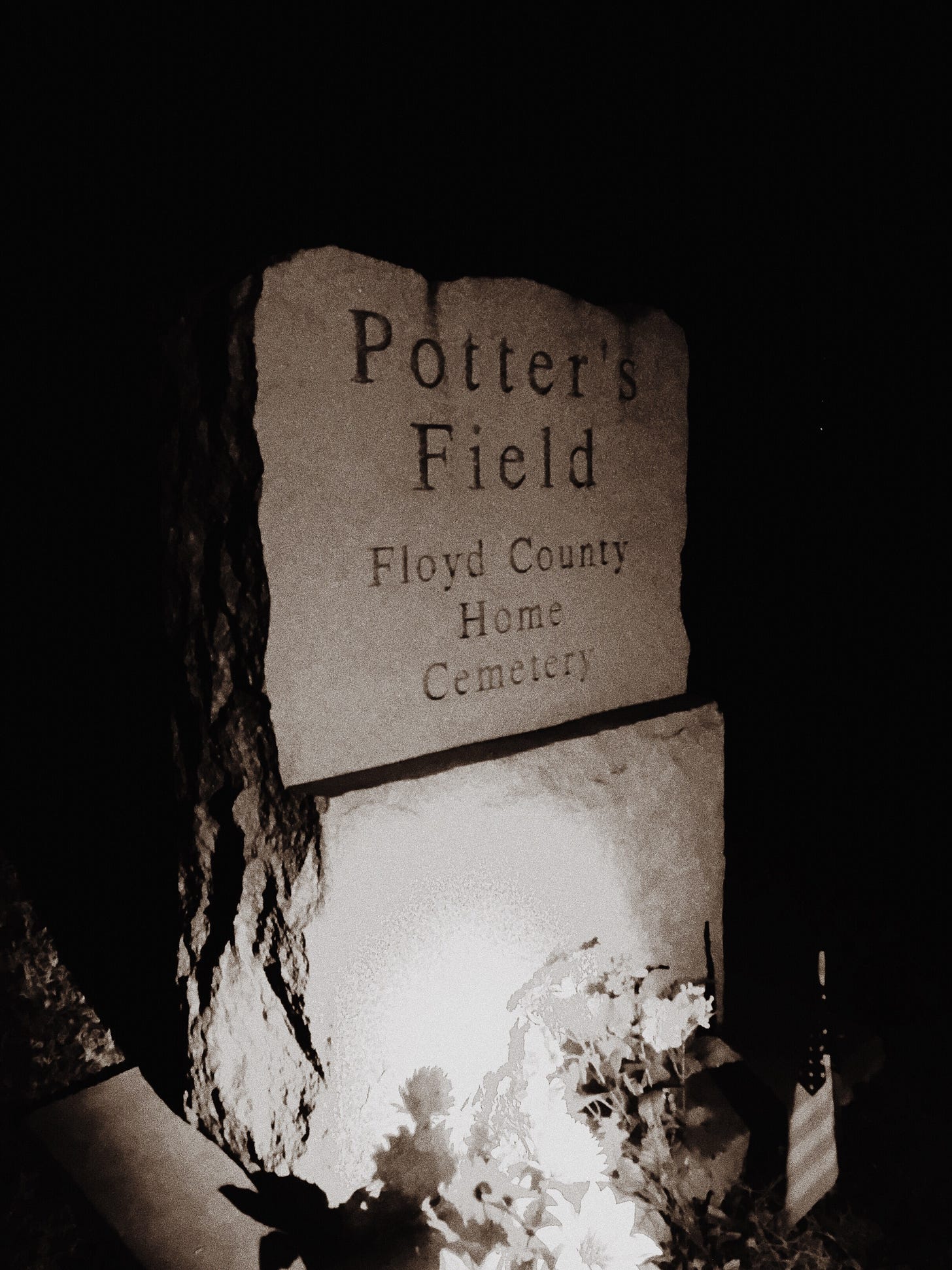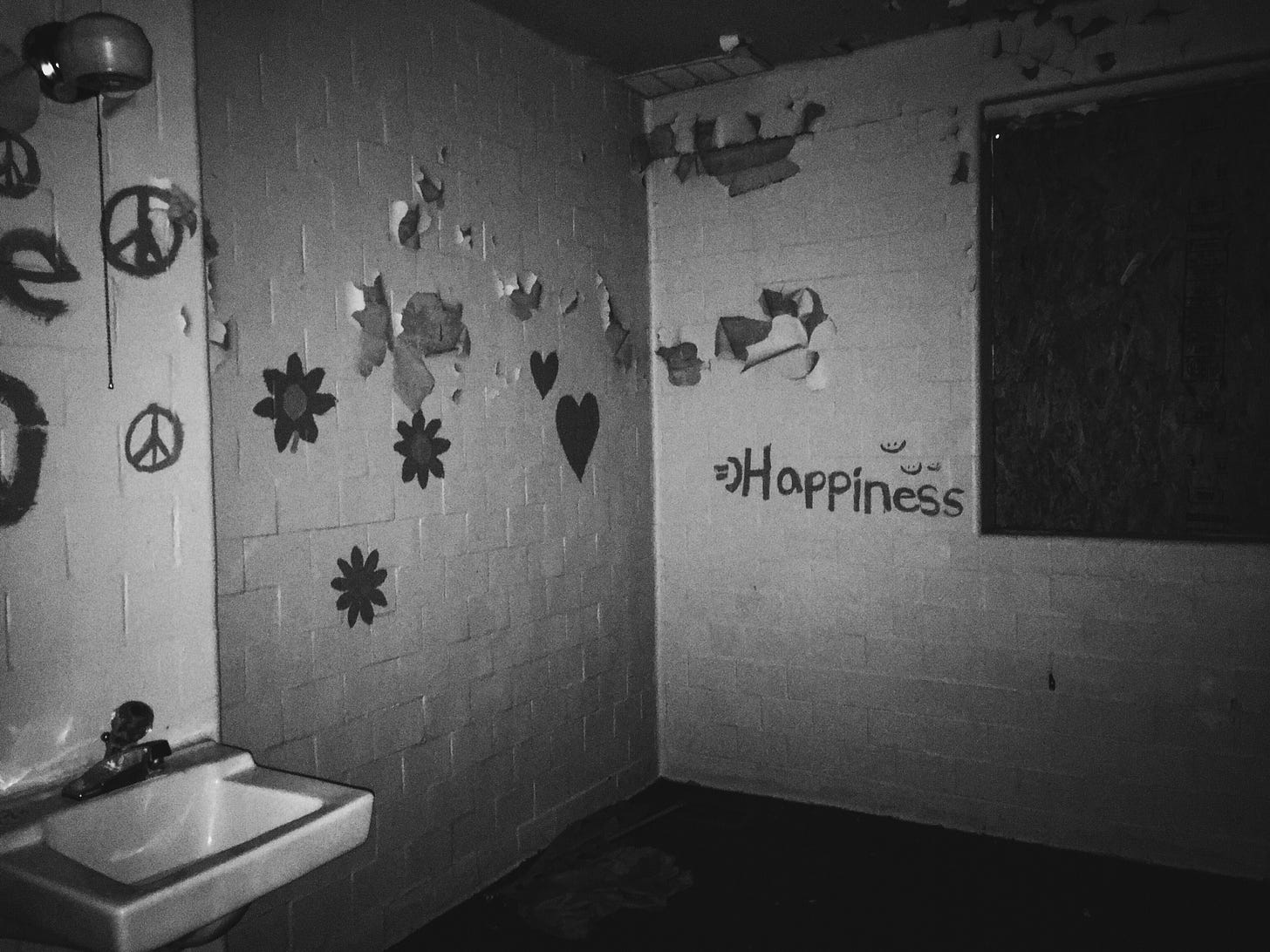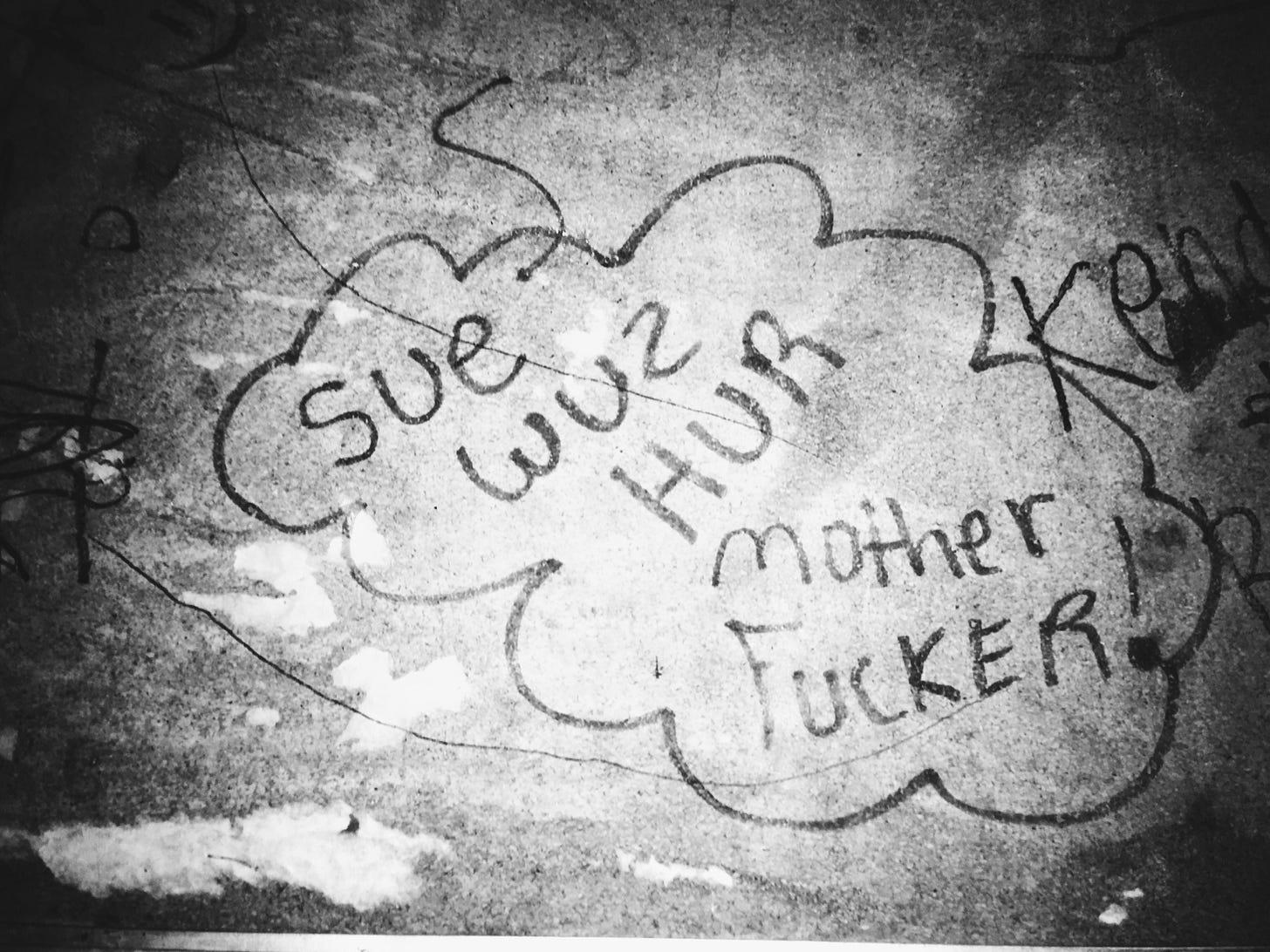Haunted Poor Farm: The Real Ghost Stories and Lost History of Floyd County Asylum
Six Nights of Paranormal Encounters, Spirit Hitchhikers, and a Fight to Preserve the Past
Haunted Poor Farm: 6 Nights of Hitchhikers & History
The Floyd County Asylum, widely known as the Haunted Poor Farm, looms as a monument to forgotten lives and the crucible that forged Paraholics. As New Albany marks its 200-year bicentennial, this haunted landmark embodies the city’s resilient spirit. Alongside Mike Culwell, a retired New Albany Police Department Chief of Detectives, and an assortment of dedicated investigators, I carved this journey through six unforgettable visits between 2012 and 2016. Those nights tested my resolve, unveiling the raw stakes of paranormal investigation. This narrative weaves together those chilling nights, the asylum’s sorrowful past, and an urgent plea to rally the paranormal community’s fervor to rescue a site teetering on collapse. My aim was never to save the building for its restless spirits alone, but to channel their magnetic draw into a lifeline, harnessing the millions the paranormal world invests in historic sites through tourism and restoration. This is ghost hunting at its most meaningful, and this place—a gritty emblem of Ohio River settlers’ endurance—merits that effort.
A History Steeped in Sorrow
In 1838, Floyd County acquired 135 acres to establish a poor farm, a 19th-century response to poverty, disability, and societal rejection. A modest log cabin, funded by local taxes, first sheltered New Albany’s desperate. By 1875, a sturdier brick building rose for 60 residents, expanded in 1878 to house over 100. It served as a multifaceted refuge: a workhouse for farming, a hospital for the ailing, and a haven for those labeled “insane” under vague criteria. The Indiana State Board of Charities in 1890 called it a “depressing necessity,” citing overcrowded quarters and scarce resources strained by elderly paupers, unwed mothers, Civil War veterans, and the mentally unwell.
On February 15, 1916, a storm-damaged flue sparked a fire that consumed the wooden attic dormitory, marking the asylum’s darkest chapter. The New Albany Ledger of February 16, 1916, reported five deaths—John Doe, Mary Ellis, Thomas Reed, Sarah Kline, and an unidentified child—though a 2004 Floyd County Historical Society survey suggests a higher toll, with some remains lost in the rubble. The blaze prompted the 1917 construction of the current brick structure, with expansions in 1916 and 1939. By the 1950s, Social Security and welfare reforms rendered poor farms obsolete, silencing its halls.
The grounds host two cemeteries, quiet testaments to forgotten lives. Potter’s Field, within Sam Peden Community Park, bears three headstones—Leslie McCracken (1957), Lerian Neves (1940), and Charles Potter (1933)—but Rich Green’s 2005 survey estimates over 300 unmarked graves beneath sunken earth. A second burial ground, possibly the McCulloch family plot, lies southwest, showing similar depressions. Green notes potential medical waste, like amputated limbs, interred there—a common 19th-century practice. A religious statue, documented in the 2004 survey, marks another suspected resting place, deepening the site’s mournful aura.
The asylum’s records brim with despair. In 1892, Joseph Pierson, aged 34, plunged to his death from a window, per Floyd County Coroner’s Records. Emma Hamilton drowned herself in a cistern in 1870, per the Floyd County Commissioners’ Report of 1871. Matilda Webb, confined since 1822, endured 60 years before dying in 1882, per asylum ledgers. Nellie Mullen, broken by her infant’s 1899 murder, succumbed raving in the “insane ward,” per the New Albany Tribune of August 2, 1899. Lucy Higgs Nichols, an escaped slave and Civil War nurse, died here in 1915, her story preserved by the Carnegie Center.
Other losses weave into this tapestry of sorrow. C.W. Salter, a merchant, died penniless in 1879, per the New Albany Ledger. In 1893, fears of grave-robbing surged when Mrs. Isaacs’ body nearly faced dissection, per the Indianapolis News of March 13. Henry Matthews fell in 1906, struck by a boy’s stone, per the Courier-Journal. Susan McElfresh in 1908 and Nancy Newby in 1910 faded in confinement, per the Courier-Journal. A Civil War veteran, lost to delusion, relived battles, per the Courier-Journal of 1899. Mahala Dorcas, nearing 100, died in 1901 after scavenging glass, per the Courier-Journal of July 7. Yet, in 1874, William Williams and Eliza Vinson wed on-site, a rare joy noted in the Indianapolis News of February 2.
The Asylum’s Decline
By the 1980s, the Floyd County Asylum, once a refuge for the destitute, had shifted to house the Floyd County Youth Shelter and Solid Waste offices. A 2008 redevelopment plan faltered, and by 2012, operations moved to Pine View Government Center, leaving the North Annex vacant, per the News and Tribune of September 28, 2012. Plans in 2021 and 2022 for a government hub dissolved amid rising costs and decay, per the News and Tribune of January 26, 2022. In 2024, New Albany issued code violations, branding the boarded-up building a hazard, per the News and Tribune of April 29, 2024.
As of April 2024, county officials grapple with the North Annex’s fate at 3005 Grant Line Road, now a recycling drop-off site adjacent to Sam Peden Community Park. Commissioner Al Knable envisions a public-private partnership to preserve its iconic status, while Councilwoman Denise Konkle pushes for a sale to ease budget strains from Senate Bill 1’s tax cuts. Commissioner Frank Loop urges demolition, citing its eyesore status. Knable aims to relocate Pine View’s offices and youth shelter by 2026, with North Annex proposals eyed for fall 2024, per the News and Tribune of April 29, 2024. A recycling center atop unmarked graves underscores the site’s neglect—a poignant insult to those buried beneath.
Community Echoes of the Poor Farm’s Haunt
Since sharing the Poor Farm’s tale on my original Paraholics blog, Floyd County residents have poured out memories that resonate deeply. Many spent time there as children when it doubled as a youth center in the late 20th century, a refuge that often left lasting wounds. They speak of a heavy atmosphere, as though the walls themselves clung to persistent echoes of the past. Some recall eerie experiences—whispers drifting through empty rooms, shadows cast by no one, chills defying the drafty corridors—that endure still. These weren’t ghost hunters chasing thrills; they were young people navigating hardship, yet the Poor Farm’s presence marked them indelibly. Their candid stories underscore its potency, not merely as a paranormal enigma but as a force that shaped lives.
Hauntings Rooted in Pain
The Poor Farm’s legacy—scarred by fire, suicides, and neglect—feeds its haunted mystique. Potter’s Field carries a palpable weight, with witnesses describing fleeting shadows, soft cries, and an unsettling calm. Within the walls, investigators report apparitions, disembodied voices, sudden cold, and objects shifting inexplicably, luring seekers to its tormented history.
My findings anchor these accounts. In 2016, Gene Caswell endured a violent basement encounter—an unseen force left him staggered, with growls and slamming doors amplifying the chaos. These aren’t just stories—they’re documented EVPs, ITC sessions, and physical confrontations. The Poor Farm’s unrest flows directly from its tragic past.
Six Nights, One Evolution
The visits from 2012 to 2016 were my proving ground, each night a step in a visceral journey that birthed Paraholics and exposed the perils of inexperience, particularly with ITC and spirit attachments.
Night 1 – Early 2012
Early 2012: My first foray came in early 2012, invited by PATH (Paranormal and Truth Hunters), Mike Culwell’s initial team. With Todd Smith, Craig Smith, Nick Pennison, and Bill Method of SOUP (Society of Unexplained Phenomena), I arrived armed with DVR cameras, recorders, and EMF meters. We set up experiments across the sprawling Poor Farm. The night was hushed, yielding no standout evidence, yet the site’s sheer presence and historical gravity captivated us. It marked my entry into this storied place.

Night 2 – December 6, 2015
This return visit with Mike Culwell, my daughter Shelby, and sister Beth brought the first real spark of the asylum’s voice. A light switched on without cause, a growl echoed in my ear, and EchoVox called me by name—adding a cryptic nod to Mike’s detective past. In Potter’s Field, a spirit box repeated “372” twice, far outnumbering the field’s three headstones. The evidence was eerie and electrifying—but I left the session wide open, and the consequences followed me home. (See The Hitchhiker Effect.)
Video:
Night 3 – Early 2016
Early 2016: An unexpected spotlight hit when WDRB Louisville, prompted by my 2015 video, invited Mike and me for a news segment. Their cameraman, “Big Country,” a proclaimed skeptic, tagged along to the 2015 hotspot. His professional cameras faltered inside—batteries drained, power severed—yet hummed to life outdoors. Visibly shaken, he had no explanation. The piece aired, stirring local curiosity, though the video has vanished. It wasn’t a full investigation, but it revealed the Poor Farm’s sway.
Night 4 – April 23, 2016
This was my most gripping night. Joined by Mike Culwell, Gene Caswell of the Jefferson County Paranormal Society, and Bobby Rice, we deployed EVPs, spirit boxes, video ITC, apps, and custom devices. A door crashed shut as I crossed the hotspot’s threshold. EchoVox fired back crisp responses, too sharp to dismiss despite my wariness of apps. Gene ventured alone into the basement, only to stagger back, reeling from an unseen assault; his GoPro cut out, leaving only audio as record. Growls, slams, and ITC bursts defined the night’s peak intensity. An EVP session also confirmed the existence of the 2015 hitchhiker and explained why I was trailed home. This night solidified the Poor Farm’s power.
Video:
Night 5 – Mid-2016
Mid-2016: Mike and I teamed up with Christopher Maggard for The Search: Existence Unknown on Roku, alongside James Clarida, Don Clarida of Research Investigators of Paranormal, and my son Charleton. We conducted a swift ITC session in Potter’s Field. My GEOBOX, a tweaked ITC spirit box, synced with their gear to pull “Yes” and names—“Thompson,” “Ashley”—from the graves. It was a tidy night at a historic site, showcasing the Poor Farm’s media pull and simmering energy.
Video:
ITC Session:
Night 6 – October 2016
October 2016: A brief visit with Kristina Goetz of the Louisville Courier-Journal, Mike Culwell, and I spawned a viral USA Today feature, “Chasing Spirits: Ex-Cop Now Hunts the Haunted.” Matt Stone’s vivid photos framed the decay. The night was subtler—a faint “Yes” and “reporters” via spirit box, a nod to Goetz’s presence, joined by overhead moans and footsteps. A temperature plunge and EM spike kept us sharp. Mike urged the spirits to stay put. This moment vaulted Paraholics into broader recognition, catching TV producers’ eyes at paranormal media’s zenith. Article | VR Video | Additional Footage | Facebook Live
The Hitchhiker Effect: When a Haunting Becomes Personal
On that fateful December 6, 2015, I led a pivotal investigation at the Poor Farm with Mike Culwell, my daughter Shelby Jackson, and sister Beth Jackson. The asylum’s chill cut deeper than the December air outside. Armed with EchoVox, Andy’s Box—a custom spirit communication device—and an SLS camera I later tossed for its unreliable stick-figure gimmick, we dove in unprepared. The asylum answered swiftly, its response as unsettling as the night itself.
A light flicked on in a room I entered alone, though the switch hadn’t been touched. A growl hit my ear. EchoVox captured a female voice saying my name and referencing Mike’s detective past with unsettling accuracy. In Potter’s Field, the spirit box repeated “372” as the number of graves—far beyond the three visible markers. The consequences came later.
Within days, exhaustion hit—mental haze, physical drain. While cleaning Andy’s Box, my name rang out unbidden. Something had followed me. A later EchoVox session at a private case revealed two entities: one, claiming to be the homeowner’s late father; the other, a young, curious female presence tied to the Poor Farm. A medium described her as benign, predicting she’d fade if ignored. With that guidance, I pulled my attention away from her—and within days, she dissolved like static. But it was my mistake that let her through in the first place. I’d opened the door and failed to close it.
A follow-up session at the Poor Farm in 2016 confirmed she had trailed me home. That night marked the turning point. The hitchhiker effect—when an energy latches onto you and rides the current of your open channel—isn’t just lore. It’s a consequence of carelessness. It can manifest as voices, tech failures, shadows, or unease. Now, I end every session with intention. I draw the line. I close the door. That night refined my process. And the videos mark the origin—a reminder: if you’re not careful, something will come with you.
A Legacy Left to Rot
At paranormal TV’s height, WDRB’s feature, The Search’s episode, and the Courier-Journal’s USA Today piece drew interest from Ghost Adventures, and Nick Groff’s Paranormal Lockdown. Those pitches promised global reach and funds—paranormal tourism pumps millions into historic preservation, bankrolling repairs. I envisioned that momentum salvaging a shard of New Albany’s essence, a tribute to Ohio River pioneers. Yet this opportunity fell upon deaf ears and dead imaginations—the county council’s investigation ban snuffed out that potential. The irony is tragic.
A Call to Preserve the Past
The Scott County Heritage Center & Museum in Scottsburg, Indiana, shows how to save the Poor Farm. Housed in the former Scott County Poor Farm, it became a museum in 2001 through a Community Focus Fund grant, a USDA loan, and volunteer efforts, now listed on the National Register. With $25 family memberships, donations, and exhibits like the Pigeon Roost Massacre, it thrives without tax dollars, even drawing paranormal enthusiasts to its haunted halls. The Floyd County Poor Farm, with its spectral pull and bicentennial weight, could follow, using tourism and grants to restore its halls and cemeteries as a New Albany landmark.
Restoration faces hurdles—2024 code violations, sagging ceilings, tight budgets. Yet Scottsburg’s model proves it’s possible: start with investigations to fund repairs, seek grants as Scott County did. Demolition erases history; community action saves it. If the Poor Farm falls, we lose Lucy Higgs Nichols’ courage, Matilda Webb’s endurance, and the child in Potter’s Field—stories etched in New Albany’s 200-year soul. Envision a restored Poor Farm: a bicentennial museum of Ohio River grit, where visitors probe haunted corridors and honor graves. The paranormal community, like Scottsburg’s volunteers, can drive this. Let’s unite to preserve these voices.
—Evel Ogilville
Join the Pursuit
Connect with Paraholics on X, Facebook, and YouTube. Share this story and dive into videos and photos from all six visits, courtesy of the Courier-Journal and Matt Stone. Explore more at Paraholics.com.



